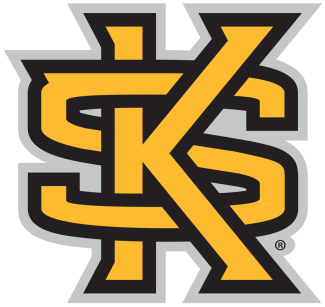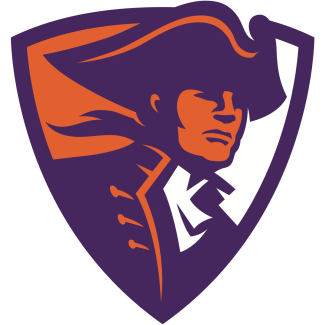No. 23 PROVIDENCE
2017 record: 10-7 (3-2 Big East)
Last seen: Coming within a game of its first NCAA tournament berth since joining the Big East, thanks largely to a stingy and capable defense.
Senior starts lost: 53 of 170 (21.2 percent)
Senior scoring departing: 53 of 254 points (20.9 percent)
Initial forecast: The Friars enjoyed a modest breakout (which included victories over Bryant, Marquette and Villanova) thanks in large part to an ability to keep opponents’ offenses in check. Defenseman Jarrod Neumann graduates after earning a second-team All-America nod, but goalie Tate Boyce (a third team pick) is back along with Providence’s top two scorers, Brendan Kearns (32 goals, 13 assists) and Nick Hatzipetrakos (22 goals, 19 assists). All three will be juniors in 2018, and are a promising core for coach Chris Gabrielli to build around. The school has clearly increased its investment in the sport (notably in the form of Anderson Stadium, which hosted the Big East tournament), but there’s a growing number of pieces in place. Providence probably isn’t contending for an at-large postseason berth next year, but it is becoming more of a handful after spending years at or near the bottom of the Big East.
No. 22 BOSTON UNIVERSITY
2017 record: 12-5 (5-3 Patriot)
Last seen: Dropping consecutive games to Army and Duke to close out a year that saw the Terriers spend time in the national rankings in only their fourth season of existence.
Senior starts lost: 72 of 170 (42.4 percent)
Senior scoring departing: 99 of 295 points (33.6 percent)
Initial forecast: First the bad news for the Terriers: They lose arguably their three most heralded players in attackman Cal Dearth, defenseman Dominick Calisto and goalie Christian Carson-Banister. It won’t be easy to replace a leading scorer, an all-conference goalie and an impressive close defense anchor. They were part of the first class to play four years at Boston University, but coach Ryan Polley did a fine job building depth in his program. The Terriers finished third in the Patriot League’s regular season and knocked off eventual conference champion Loyola, and they’ll bring back Jack Wilson (29 goals, 18 assists), James Burr (24 goals, seven assists) and Ryan Hilburn (17 goals, 17 assists) to provide offensive stability. Boston University enjoyed a fabulous start this year; in 2018, look for the Terriers to enjoy their best moments at the end of the season.
No. 21 BROWN
2017 record: 10-6 (4-2 Ivy)
Last seen: Falling to Yale in the Ivy League final, a loss that brought 2016 Tewaaraton winner Dylan Molloy’s college career to an end.
Senior starts lost: 71 of 160 (44.4 percent)
Senior scoring departing: 131 of 353 points (37.1 percent)
Initial forecast: The Bears’ encore to their first trip to Memorial Day weekend since 1994 didn’t turn out to be much of a surprise. Molloy (44 goals, 27 points) and long pole Larken Kemp were excellent, and defenseman Alec Tulett enjoyed a fine senior year as well. But the key to Brown thriving at a rapid pace in 2016 was dominance on faceoffs and in goal, and it had to replace both contributors. Now, senior-to-be Ted Ottens (59.7 percent) has a year of starting experience, and goalie Phil Goss has grown into his role after being thrown into a prominent role as a freshman. As for the offense, expect that unit to remain strong even after Molloy’s departure. The Bears will have four of their five 20-goal scorers back, and Jack Kniffin and Luke McCaleb have the potential to be centerpieces on attack for the next three years.
No. 21 (TIE) VILLANOVA
2017 record: 9-6 (4-1 Big East)
Last seen: Out of sorts in the Big East semifinal, losing to Providence just five days after handling the Friars with ease on the same field
Senior starts lost: 62 of 150 (41.3 percent)
Senior scoring departing: 139 of 319 points (43.6 percent)
Initial forecast: The Wildcats have a consistent identity (at least at the offensive end, anyway), and that’s always a plus. It will be even more valuable than usual next year with the loss of Jack Curran (46 goals, 19 assists) and Jake Froccaro (34 goals, 14 assists). Most teams that lose their top two scorers take a hit, and that will probably be true of Villanova in 2018. Of course, the Wildcats opened this past season 1-4 before a strong stretch that included defeats of Maryland, Marquette and Brown. Two things stand out when looking at Villanova’s accomplishments this year — a .477 faceoff percentage (45th nationally) and a .459 save percentage. Those two areas need to improve, especially if it takes a little time for an offense led by Christian Cuccinello (33 goals, 31 assists) to get rolling next year.


























































